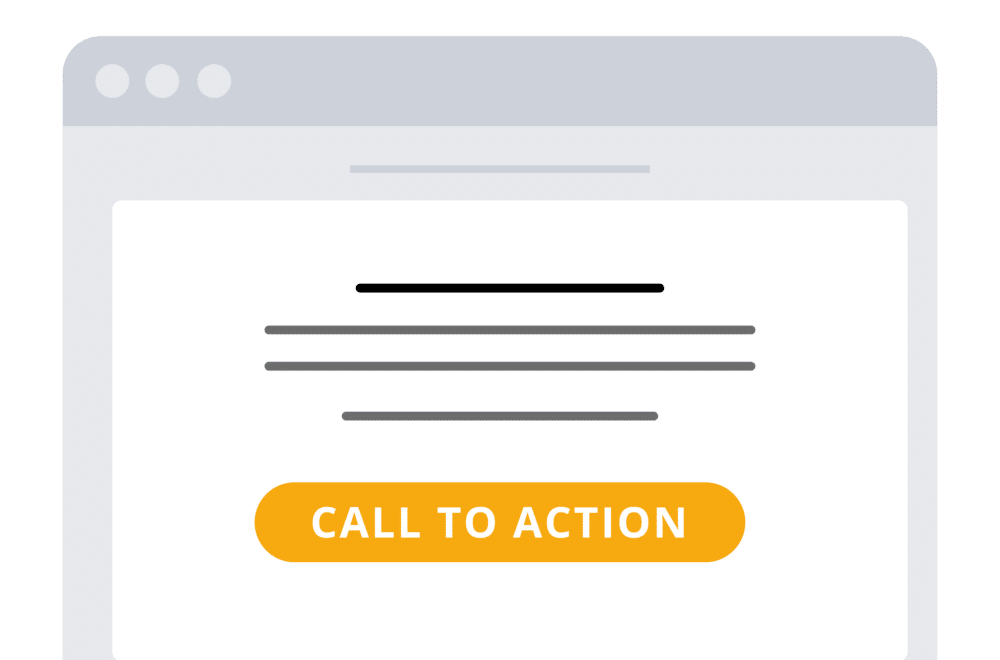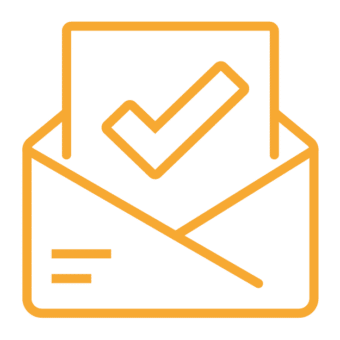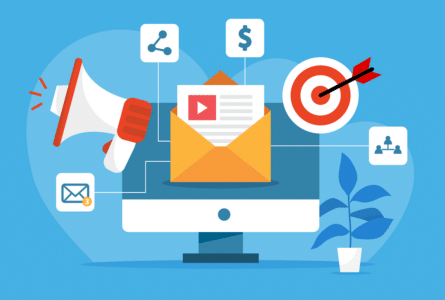Social media, instant messaging and Google Ads are increasingly competing with marketing emails, making some people begin to question the legitimacy and effectiveness of continuing email campaigns in 2022. However, with an overall average open rate of 16.97% in 2021, and keeping in mind that 49% of professionals purchase a service after receiving an email, email marketing remains a powerful marketing tool for customer conversion and retention. Do you want to stack the odds in your favor?
Here are our 5 tips for successful email campaigns and some new data to consider to help you stand out from the competition.
#1 Choose a strong subject line
The subject line of your email is crucial! This will determine the success of your campaign because these are the first words your recipients will read. As Hubspot so aptly puts it, your subject line is the window into your email, and maybe even into your business as well.
The subject line of your mailing must be attractive, intriguing and make people want to open the email while remaining concise. It also shouldn’t necessarily be a summary of your content.
#2 Write and structure content adapted to your target
Before creating any content, you have to know your target well. Consider segmenting your contacts by category in order to send the right content to the right audience.
For your message, use copywriting, the art of selling through words, and introduce your newsletter with the most important message: your contacts generally don’t spend much time reading an email (11 seconds at most!) so make sure that your mailing’s message is clearly highlighted right from the beginning.
From a structural point of view, your email should have an attractive design that visually highlights the different parts of the message in this order:

A strong subject line to attract the recipient's attention

A polished pre-header at the top of the message. This is the first sentence in the body of the email that appears as a preview in the recipient's inbox. The pre-header should be the logical continuation of the subject and provide more information. It can be personalized, express a sense of urgency... in short, it can help you increase the open rate of your mailings.

A message body composed of several small paragraphs (a maximum of 250 words is ideal) and written in a font compatible with inboxes and web browsers such as Arial or Verdana, avoiding excessive use of capital letters or bright colors. The current trend is to capture the recipient's attention by integrating contact forms or dynamic content such as a gif or short video.
If you integrate a visual, make sure it is good quality, adapted to your target and in GIF or JPEG format.

A Call-to-Action button: that famous brightly colored button that intuitively leads you to click. This should be placed above the fold, i.e. at the limit of what you can see of the message without scrolling. If this button is not too low in your message, there is a higher chance that it will be seen and clicked on. The message of the call-to-action button must incite the reader to click and respond to the initial promise announced in the subject line of the email.
Lastly, always keep in mind that about 45% of emails are opened via a mobile email application: you will need your email design to be responsive, meaning that your email (text and images) must display perfectly on all devices.
#3 Correct the deliverability of your email campaigns
After following all of our first tips for writing and structuring your message, you will need to make sure that your emails are sent properly and delivered to your recipients. Deliverability is essential for the success of your campaigns. But, beware: "Successfully sent" does not necessarily mean "delivered"!
The delivery rate of your emails is the measure of the number of emails sent that actually end up in the inbox of your recipients. For example, for 100 emails sent, you can get a 95% delivery rate: this means that only 95 of them reached the inbox of your recipients and the remaining 5 were not “delivered.” Failed email delivery implies that the email was sent without reaching the recipient, or that it was received but was filtered, directed to a spam or junk folder, or even deleted.
Why aren't all emails delivered properly?
The first reason could be the validity of your contact addresses: some addresses might have been saved incorrectly or no longer exist. It is therefore important to regularly update your databases.
Then, your message must pass the anti-spam barriers set up by webmails (Gmail, for example, is a webmail because it requires the use of a web interface to access, read, or send emails), Internet Service Providers (ISP) or IT services specific to certain companies. Depending on the configuration of these filters, they may wrongly redirect legitimate messages. According to Dolist, a provider of solutions and services for email issues, nearly 90% of messages received by ISPs are filtered before they even reach the main inbox of recipients, which represents nearly 100 billion emails a day worldwide.
How can you improve your delivery rate?
Many factors can influence the deliverability of your email campaigns. We have listed the main points you should consider below:
- The quality of the email addresses used. Be sure to sort your contact database regularly! A healthy and updated database ensures optimal email deliverability.
- The choice of your email service provider: you must choose a service provider able to anticipate the ever-changing anti-spam filtering rules and guide you in the formatting of your campaigns (addition of sender headers; systematic integration of an unsubscribe link; implementation of email authentication standards (SPF) which allow ISP servers to verify your identity and validate the integrity of your message while fighting against phishing, etc.) Among the service providers we know, we can recommend Sendinblue, Mailchimp, GetResponse, Mailjet and AWeber.
- The content of your email and compliance with HTML code: to ensure that your emails are readable, make sure your texts, visuals, links and codes are put together properly. The ideal is to respect a text/image ratio of 70/30 maximum with light images because the weight of your email should not exceed 60 KB. The choice of the format will also influence the deliverability of your email. An HTML format allows an infinite number of design and layout possibilities, but some webmails will automatically redirect this type of email to the "promotions" tab in the inbox. If your recipient has a slow connection, the images of your email won’t be displayed properly—which is why it’s important to add alt texts to the display of your images and to include a link to an online version. A marketing email written in text format will be more austere and less sophisticated than one full of images, but thanks to its resemblance to a private email (such as those sent by your friends and family), it will be considered "trustworthy" by your webmail and will be more likely to make it to the main inbox.
- The frequency and organization of the sending volume is an important parameter for deliverability: you have to find the right balance and be transparent with your subscribers by indicating the frequency of your communication as soon as they subscribe. Otherwise you will see your complaint rate (people who have reported your emails as spam) increase.
#4 Analyze and optimize your campaigns
Your email campaign is launched, but it doesn’t end here! In order to determine the success of your campaign, you must analyze all the statistics at your disposal according to the key performance indicators (KPIs) you set ahead of time.
In email marketing, the most common are:

Open rate:
The percentage of subscribers who opened your newsletter (by domain / like-for-like / over time) compared to the number of emails sent.

Click-through rate:
The percentage of recipients who clicked on at least one link in your newsletter.

Conversion rate and/or revenue per click:
The percentage of recipients who performed the desired action after clicking on the target page (purchase, download, read the full blog post, etc.)

Bounce rate:
The number of emails that failed to reach recipients compared to the number of emails sent.
To improve your results, it is important to record all these statistics about 7 to 10 days after sending your campaign and to keep them in order to compare them week after week, month after month, year after year, etc.
By keeping a close eye on your metrics, you'll quickly find out which campaigns worked and which ones didn't, and which topics you will need to rework for better results. If you want to take things a step further, you can also compare your metrics to the averages of your competitors and others in your sector.
However, don't focus all of your attention on the statistics as they can sometimes be misleading! For example, since the arrival of IOS15 (the fifteenth major version of the mobile operating system IOS developed by Apple for its range of iPhone and iPod touch), Apple offers all users of its email application "Apple Mail” the option of activating data protection called "Mail Privacy Protection" when viewing emails. This new feature systematically caches data, hides the IP address and no longer allows service providers to track opened emails. This can have a major impact because:
- By default, the open rate is equal to 100% for Apple Mail
- According to data from Apple, iOS 15 is now installed on 72% percent of all iPhones introduced in the last 4 years, and on 63% of all Apple mobile devices overall.
This means open rate statistics are inaccurate... We suggest two strategies: determine which addresses are concerned and "take them out" of your open rate metrics, and focus more on the click rate which is an indicator that shows stronger commitment than the open rate.
#5 Test, test and re-test
We can never say it enough, digital practices and technologies are constantly evolving, as is the behavior of your targets.
It is by testing new formats - think more interaction with polls, very quick quizzes - and new schedules that you will get to know your target better, and be able to anticipate their behavior.
We suggest you review the two areas you have room to play with that will help you streamline and optimize your mailing strategy:

Sending days, times and frequency
There is no magic formula, no foolproof recipe! Your goal remains the same: to deliver the right message to the right person at the right time. It is therefore essential toanalyze your KPIs after each mailing and to adapt your sending hours and days. Sendinblue has come up with a very comprehensive infographic on the subject that recommends ideal sending times according to your business: it’s worth taking a moment to check it out.
As for the sending frequency, this is also an important factor to take into account. Your goal is for your customers to look forward to your emails: building a relationship of trust will require consistency and regularity. Once a week, once a month... be explicit from the start and inform your customers about the regularity of your communication.

A/B testing
A/B testing consists of making two versions of your email: a version A and a version B. You can thus test two different subject lines, two images, two call-to-actions, two schedules, etc. You will then have to select two samples from your contact database, and send a different version of your email to each target. After analyzing the results, you can send the version of your email that worked best to your entire contact database.
Make sure you only test one different element per email! If your version B is too different from version A, you will not be able to compare your results objectively.
In 2022, there are two new email marketing developments to consider:
- Confidentiality and respect for the privacy of users are essential: you should collect contacts’ consent before adding them to your mailing list, just as visitors to a website must accept cookies.
- Social and environmental trends such as inclusion and carbon neutrality are becomming popular in email marketing. You should think about transforming your email templates to make them more accessible, more inclusive and thus reach your entire audience, as well as taking an interest in the weight of your emails before sending them.
Inexpensive, customizable, and enabling continuous improvement, email marketing still has a bright future in B2B: it remains one of the most effective tools for retaining and converting prospects.










